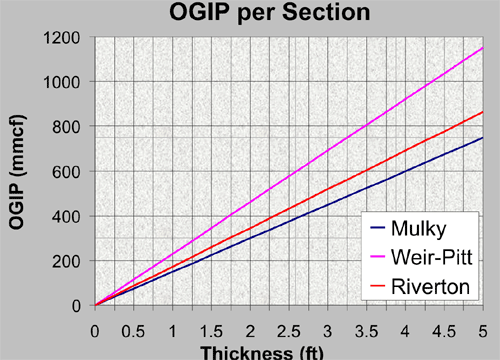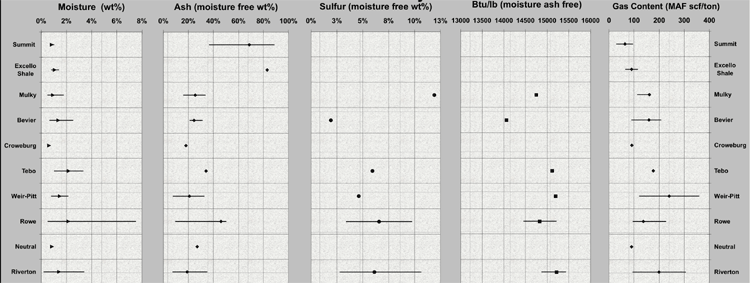 |
|
Kansas Geological Survey Open-file Report 2003-28 |
Proximate Analysis
The ASTM Book of Standards (2002) describes the process of proximal analysis on coals. To report analytical results on a dry (moisture free) basis, moisture content needs to be determined first. Testing for moisture entails calculating the weight loss of a sample when heated. Determining ash content involves burning the sample and weighing the residue. Ash is an important indicator of clastic input, likely derived from marine invasion during peat development. Calculation of sulfur entails mixing part of the sample with Eschka mixture, the sulfur dissolves in hot water and precipitates as barium sulfate. The barium sulfate is filtered, ashed, and weighed. Sulfur content is an indicator of coal quality. The graphs above show a relationship between ash and sulfur, where ash content increases with sulfur content. Like ash, coals with higher sulfur contents reflect a marine influence. Once calculations for moisture and ash content are obtained the calorific value (Btu/lb) can be determined on a moisture ash free basis. Calculating the calorific value involves burning a sample in an adiabatic oxygen bomb calorimeter. Observation of temperature before and after combustion represents the calorific value. The calorific value provides a basis to determine rank of coals. For example, coals such as the ones above have calorific values greater or equal to 14,000 Btu/lb and are classified as high-volatile A bituminous.

Gas in place per section (one square mile) assuming a constant thickness in coal and given an average gas content of 130 scf/ton for the Mulky, 200 scf/ton for the Weir-Pittsburg and 150 scf/ton for the Riverton.
|
|
e-mail : webadmin@kgs.ku.edu
Last updated May 2003
http://www.kgs.ku.edu/PRS/publication/2003/ofr2003-28/P3-03.html
